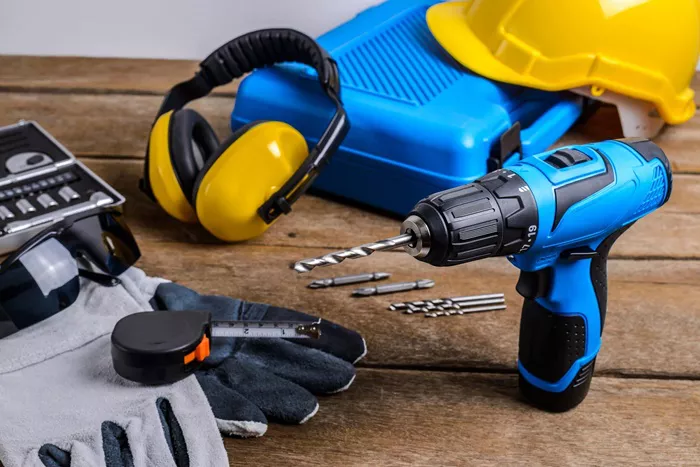When working with plastic, using the right drill bit is crucial to avoid cracking, melting, or rough edges. Unlike wood or metal, plastic requires a specialized approach due to its softer, more flexible nature. In this guide, we’ll explore the 6 best drill bits for plastic, their features, and why they stand out.
Twist Drill Bits (HSS & Cobalt)
Best for General Plastic Drilling
High-Speed Steel (HSS) and Cobalt twist drill bits are among the most common choices for drilling plastic. They are versatile, affordable, and widely available.
Why They Work Well:
-
- Sharp, pointed tips reduce chipping.
- Available in various sizes (0.3mm–20mm).
- HSS-E (cobalt) variants offer better heat resistance, reducing melting risks 1.
Best Use Cases:
-
- Acrylic sheets
- PVC pipes
- Polycarbonate panels
Pro Tip: Use a low drill speed (500–1,500 RPM) to prevent overheating.
Brad Point Drill Bits
Best for Clean, Precise Holes
Brad point bits (also called dowel bits) are designed for wood but work exceptionally well on plastic due to their sharp center point and clean-cutting edges.
Why They Work Well:
-
- The centering spur prevents wandering.
- Outer spurs shear plastic cleanly, reducing burrs.
- Ideal for thin plastics where precision matters 11.
Best Use Cases:
-
- Drilling holes for screws in plastic furniture.
- Creating dowel joints in plastic panels.
Pro Tip: Apply masking tape over the drilling area to prevent surface splintering.
Step Drill Bits
Best for Multiple Hole Sizes in Thin Plastic
Step drill bits are cone-shaped with multiple diameter increments, making them perfect for enlarging holes without switching bits.
Why They Work Well:
-
- No snagging smooth transitions between sizes.
- Reduced friction prevents melting.
- Works well on acrylic, ABS, and polypropylene 4.
Best Use Cases:
-
- Electrical enclosures.
- Adjusting hole sizes in plastic storage bins.
Pro Tip: Use a backing board underneath to prevent blowout on thin plastic sheets.
PCD (Polycrystalline Diamond) Drill Bits
Best for Fiberglass-Reinforced Plastics
PCD-coated bits are ultra-durable and designed for abrasive materials like fiberglass, carbon fiber, and reinforced plastics.
Why They Work Well:
-
- Diamond-coated edges stay sharp longer.
- No heat buildup critical for composite plastics.
- Used in aerospace and automotive industries 1.
Best Use Cases:
-
- Drilling CFRP (carbon fiber reinforced plastic).
- High-precision industrial applications.
Pro Tip: These bits require coolant or minimal lubrication for best results.
Forstner Drill Bits
Best for Flat-Bottomed Holes in Thick Plastic
Forstner bits excel at drilling large, clean holes without splintering, making them ideal for thick plastic blocks.
Why They Work Well:
-
- Shear-cutting action reduces cracking.
- Creates smooth, flat-bottomed holes.
- Works on plexiglass, HDPE, and UHMW plastics 11.
Best Use Cases:
-
- Custom plastic fabrication.
- Making recessed holes for fittings.
Pro Tip: Use a drill press for better control and accuracy.
Carbide-Tipped Drill Bits
Best for Hard Plastics & Repeated Use
Carbide-tipped bits are extremely durable and maintain sharpness even after prolonged use on hard plastics.
Why They Work Well:
-
- Tungsten carbide tips resist wear.
- Less prone to overheating than standard HSS.
- Ideal for nylon, Delrin, and engineering plastics 6.
Best Use Cases:
-
- Industrial plastic machining.
- High-volume production work.
Pro Tip: Pair with a slow, steady feed rate to avoid chipping.
How to Choose the Right Drill Bit for Plastic?
Material Matters
Soft plastics (PVC, acrylic): Brad point or twist bits.
Hard plastics (polycarbonate, nylon): Carbide or PCD bits.
Reinforced plastics (fiberglass): Diamond-coated or step bits.
Drill Speed & Technique
Low RPM (500–1,500) prevents melting.
Use a backing board to prevent cracking.
Peck drilling (drill in short bursts) helps clear debris.
Conclusion
Choosing the best drill bit for plastic depends on the material, hole size, and application. Whether you’re working on a DIY project or industrial fabrication, the right bit ensures clean,crack-free holes. Stick to low speeds, sharp bits, and proper technique for the best results.
Related Topics:

